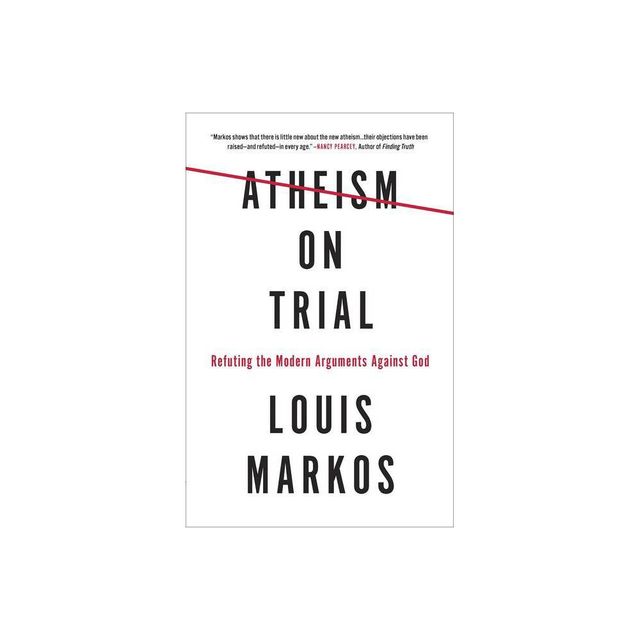Home
The Museum of Atheism
Loading Inventory...
Barnes and Noble
The Museum of Atheism
Current price: $17.00


Barnes and Noble
The Museum of Atheism
Current price: $17.00
Loading Inventory...
Size: OS
*Product Information may vary - to confirm product availability, pricing, and additional information please contact Barnes and Noble
On Christmas night, a small girl is crowned at a pageant, before stumbling into the snowy darkness, alone, to meet her greatest fan. Set in Rosewood's forest, the "creeping liquefaction" of the dead produces a fungal harvest that casts a spell on the town. In the endless dark of winter, feral creatures thrive, and psychedelic spores infect the air.
The Museum of Atheism,
deep below ground, is full of hallucinatory terrors.
A page-turning read, riddled with the stuff of nightmares, read it if you dare.-Clare Wigfall
The Museum of Atheism
is an inviting and sinister affair, sweet and deadly as a thicket of mushrooms, their dear deadly anklets and caps of toxic spores.-Joyelle McSweeney
As a reader you are investigating not just a murder, but also a setting and a language, for this rich peculiarity flows into the prose.-Alec Johnson
[A] Lynchian detective novel set in small town America, which is teeming with toadstools. At the top of each of the book's chapters, Joyce names and describes varieties of fungus called things like Slime Cap, Destroying Angel, Disco Cup, Midnight Bolette; the inclusion of fungi invariably portending some dead matter that the reader unearths beneath. This is more than just a clever ploy that sets an unsettling tone, it also hints at Joyce's take on writing in general, and encourages us to consider the parallels between the written text and the mushrooms it describes. This is perhaps Joyce's improvisation upon the deconstructionist adage that all writing is parasitical: for her, fiction writing may instead be fungal, nourished by the moldering work of dead and decaying authors, springing up threadlike and dangerous in the dark. Although both this and the deconstructionist procedure see reading and writing as a kind of vitalist ecosystem, Joyce's work seems to linger longer upon the moment of decomposition-the transgressive moment that dawdles at the boundary between death and life.-Diarmuid Hester, from review in 3AM
I think a rendering of woodland as necro-forest is one way that writers now explore our toxic relationship with the "natural" world around us, rejecting some of the "clean" versions of nature offered up in the past. One writer who does this especially horrifyingly is Laura Ellen Joyce. Her first novel,
tells the story of a murdered child beauty-queen, killed in the dead of winter in a snow-secluded cabin at the edge of the woods. The novel opens with a sublimely slimy description of "Mushroom Soil", of the "creeping liquefaction" under the earth that leads to a spectacular mushroom harvest of Ghost Fungus and Witches' Butter, Vinegar Cups and False Deathcaps. Each chapter of the novel then begins with an exquisite description of a specific fungi, the environment in which it grows, and its deadly effects. "Nature" here is anything but clean and pure; the forest thrives on bones and blood.-Naomi Booth
The Museum of Atheism,
deep below ground, is full of hallucinatory terrors.
A page-turning read, riddled with the stuff of nightmares, read it if you dare.-Clare Wigfall
The Museum of Atheism
is an inviting and sinister affair, sweet and deadly as a thicket of mushrooms, their dear deadly anklets and caps of toxic spores.-Joyelle McSweeney
As a reader you are investigating not just a murder, but also a setting and a language, for this rich peculiarity flows into the prose.-Alec Johnson
[A] Lynchian detective novel set in small town America, which is teeming with toadstools. At the top of each of the book's chapters, Joyce names and describes varieties of fungus called things like Slime Cap, Destroying Angel, Disco Cup, Midnight Bolette; the inclusion of fungi invariably portending some dead matter that the reader unearths beneath. This is more than just a clever ploy that sets an unsettling tone, it also hints at Joyce's take on writing in general, and encourages us to consider the parallels between the written text and the mushrooms it describes. This is perhaps Joyce's improvisation upon the deconstructionist adage that all writing is parasitical: for her, fiction writing may instead be fungal, nourished by the moldering work of dead and decaying authors, springing up threadlike and dangerous in the dark. Although both this and the deconstructionist procedure see reading and writing as a kind of vitalist ecosystem, Joyce's work seems to linger longer upon the moment of decomposition-the transgressive moment that dawdles at the boundary between death and life.-Diarmuid Hester, from review in 3AM
I think a rendering of woodland as necro-forest is one way that writers now explore our toxic relationship with the "natural" world around us, rejecting some of the "clean" versions of nature offered up in the past. One writer who does this especially horrifyingly is Laura Ellen Joyce. Her first novel,
tells the story of a murdered child beauty-queen, killed in the dead of winter in a snow-secluded cabin at the edge of the woods. The novel opens with a sublimely slimy description of "Mushroom Soil", of the "creeping liquefaction" under the earth that leads to a spectacular mushroom harvest of Ghost Fungus and Witches' Butter, Vinegar Cups and False Deathcaps. Each chapter of the novel then begins with an exquisite description of a specific fungi, the environment in which it grows, and its deadly effects. "Nature" here is anything but clean and pure; the forest thrives on bones and blood.-Naomi Booth


















